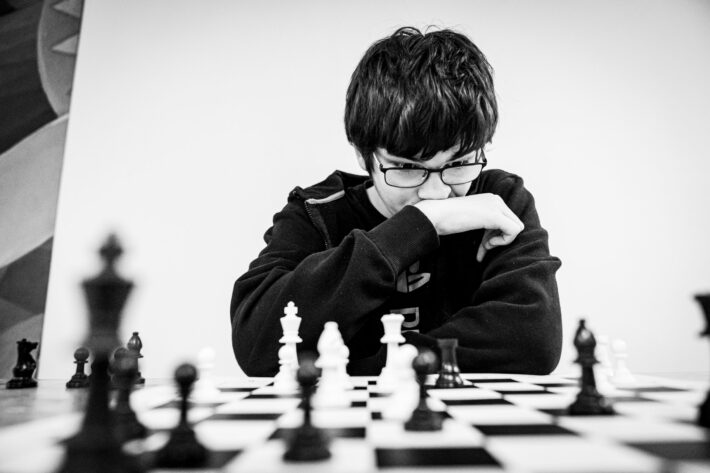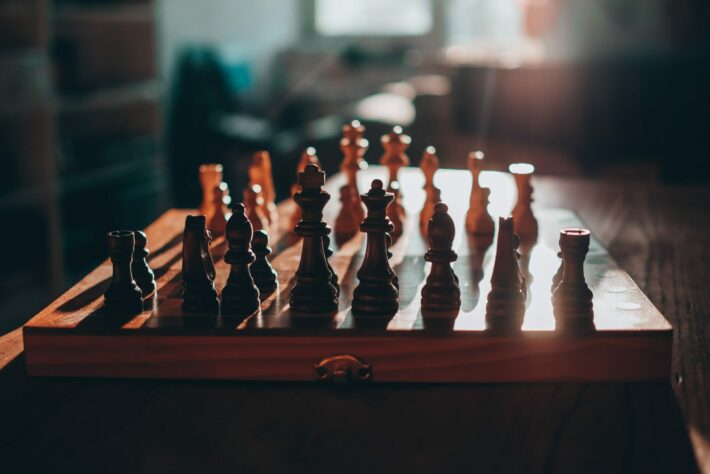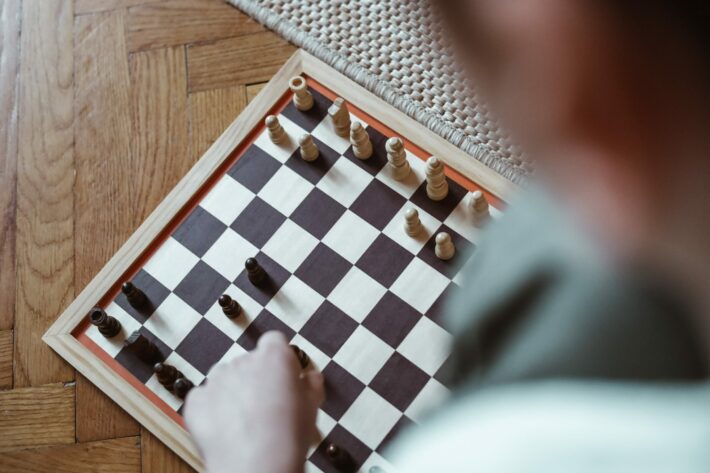In the game of chess, a stalemate is a captivating phenomenon that can turn the tide of a match. It occurs when a player’s king is not in check but has no legal moves available.
This intriguing stalemate situation adds depth and complexity to the game, demanding strategic thinking, tactical awareness, and careful calculation. In this article, we delve into the intricacies of a stalemate, exploring its rules, strategies, and the psychological implications it holds.
How does a stalemate occur in chess?
A stalemate occurs in chess when a player’s king is not in check, but they have no legal moves available. This happens when the player’s pieces are either blocked or unable to move without putting their king in check.
Stalemates often arise due to tactical complications or defensive maneuvers, leading to a draw instead of a checkmate. It is crucial to understand the intricacies of stalemate rules to navigate such situations and avoid losing or missing out on a potential victory.
What are the rules and conditions for a stalemate in chess?

In chess, a stalemate is a draw that occurs when the player whose turn is to move has no legal moves available and their king is not in check. The key conditions for a stalemate include the absence of any legal move for the player and the king not being in check.
When these conditions are met, the game is declared a draw, resulting in neither player winning nor losing. Stalemates add an element of complexity and strategy to the game, often leading to exciting endgame scenarios.
Can a stalemate result in a draw in chess?
Yes, a stalemate always results in a draw in chess. When a player’s king is not in check, but they have no legal moves available, the game has declared a stalemate, leading to a draw.
Stalemates offer an opportunity for the player in a disadvantaged position to escape with a draw instead of a loss. Players need to recognize stalemate possibilities to avoid falling into traps and to utilize them strategically when in need of a favorable outcome.
Are there any strategies to intentionally force a stalemate in chess?
While forcing a stalemate intentionally is a less common strategy in chess, certain scenarios might arise where it becomes a viable option. To intentionally force a stalemate, players must focus on defensive moves, seeking opportunities to trade pieces and simplify the position.
Players can salvage a draw from a seemingly losing position by avoiding checkmate while aiming for a stalemate draw. Careful calculation, tactical awareness, and exploiting the opponent’s weaknesses are key factors in successfully executing this strategic approach.
What are the consequences of a stalemate in chess?
The consequences of a stalemate in chess are that the game is immediately declared a draw. Neither player wins nor loses the game. A stalemate can occur due to a combination of factors such as blocked pieces, limited mobility, or careful defensive play.
It often serves as a lifeline for the player in a disadvantageous position, allowing them to escape with a draw instead of a loss. Stalemates showcase the complexity and depth of chess, offering players alternative outcomes and unique challenges.
How does a stalemate differ from a checkmate in chess?
A stalemate differs from a checkmate in chess in that a stalemate results in a draw, while a checkmate leads to the immediate victory of one player.
In a checkmate, the player’s king is under attack (in check) and has no legal moves to escape capture, resulting in a loss. On the other hand, in a stalemate, the player’s king is not in check, but they have no legal moves available, leading to a draw instead of a win or loss.
Can a stalemate be avoided in chess?

Stalemates can be avoided in chess by maintaining an active approach and ensuring that the player always has legal moves available for their pieces. It involves careful planning, calculation, and anticipation of potential stalemate scenarios.
Players should avoid passivity and strive to maintain piece mobility, control of the board, and maintain threats against the opponent’s king. By proactively creating winning opportunities and avoiding positions that limit their legal moves, players can reduce the chances of a stalemate occurring.
What are the common misconceptions about the stalemate in chess?
One common misconception about the stalemate in chess is that it is considered a winning condition. In reality, a stalemate is a draw, not a win. Another misconception is that all blocked positions lead to a tie, whereas a stalemate can only occur if the player has no legal moves available.
Additionally, some may assume that stalemates are rare, but they can arise in various stages of the game. It is important to understand the true nature and implications of stalemate to avoid falling victim to these misconceptions.
Is it possible to turn a losing position into a stalemate in chess?
While turning a losing position into a stalemate is challenging, it is possible in certain situations. When facing an opponent with a material advantage, the losing player can focus on defensive moves, seeking opportunities to trade pieces and simplify the position.
By avoiding checkmate and aiming for a stalemate draw, they can potentially salvage a draw from a seemingly losing position. Tactical awareness, careful calculation, and exploiting the opponent’s weaknesses are key factors in attempting to achieve a stalemate from a disadvantaged position.
The table below shows Transforming a Losing Position into a Stalemate in Chess:
| Scenario | Strategy | Outcome |
|---|---|---|
| When the opponent has a material advantage | Focus on defensive moves, seeking opportunities to trade pieces | Avoiding checkmate and aiming for a stalemate draw |
| When the opponent has a strong positional advantage | Create tactical complications, aim for piece exchanges to simplify the position | Reduce the opponent’s advantage and create possibilities for a stalemate |
| When the opponent is in a time troubled situation | Keep the position complex, pose difficult decisions, and create time pressure | Force the opponent to make mistakes and potentially reach a stalemate |
| When the opponent neglects stalemate threats | Look for stalemate tricks, set up tactical traps, and exploit the oversight | Surprise the opponent with a stalemate and secure a draw from a losing position |
| When the opponent lacks endgame knowledge | Transition to an endgame with drawing chances, such as king and rook versus king | Utilize the opponent’s lack of endgame expertise to reach a stalemate |
Can a stalemate happen in the opening or endgame phase of a chess game?
Stalemates can happen in both the opening and endgame phases of a chess game, although they are relatively less common in the opening. In the opening, players generally have more peace mobility and opportunities for legal moves, making stalemates less likely.
However, in the endgame, where the number of pieces on the board is reduced, and kings become more vulnerable, the chances of a stalemate occurring increase. The endgame often presents complex positions where players need to be cautious to avoid falling into a stalemate trap.
What are some famous examples of stalemate in chess history?
Chess history is filled with fascinating examples of stalemates that showcase the intricacies of the game. One notable example is the game between Garry Kasparov and Anatoly Karpov in their 1987 World Chess Championship match.
In one game, Karpov, in a seemingly losing position, managed to set up a tactical stalemate trap, forcing a draw against Kasparov. Such examples demonstrate the tactical creativity and resourcefulness required to achieve a stalemate, even in highly competitive and intense matchups.
How does the concept of stalemate contribute to chess strategy?
The concept of stalemate in chess contributes significantly to chess strategy by adding depth and complexity to the game. Players must be aware of the potential for the stalemate to both avoid falling into traps and exploit the possibilities when in a disadvantageous position.
Stalemate forces players to carefully consider their moves, anticipate their opponent’s responses, and strike a balance between aggression and caution. Understanding the implications of stalemate enhances overall strategic thinking and influences decision-making processes throughout the game.
What are the various tactical patterns associated with the stalemate in chess?
Stalemate in chess is associated with various tactical patterns that can create opportunities or traps for players. These patterns include decoy sacrifices, zugzwang situations, stalemate combinations, and positional sacrifices.
Decoy sacrifices involve sacrificing a piece to lure the opponent’s king into a position where it is a stalemate. Zugzwang occurs when any move made by the player puts their king in check or leads to a disadvantageous position. Recognizing and utilizing these tactical patterns can lead to unexpected stalemate opportunities or help avoid falling into stalemate traps.
Are there any notable exceptions to the stalemate rule in chess?
In chess, the stalemate rule is generally consistent and applies universally. However, there is one notable exception called the “Fifty-move rule.” According to this rule, if no pawn has been moved and no capture has occurred in the last fifty moves, either player can claim a draw due to a stalemate.
This exception is in place to prevent excessively long games where no progress is made. Understanding this exception is essential for players to navigate such situations and make the most strategic decisions.
Can a player claim a stalemate as a winning condition in chess tournaments?
No, a player cannot claim a stalemate as a winning condition in chess tournaments. Stalemate is a draw and does not result in a victory for either player. In chess tournaments, the rules dictate that a stalemate is scored as a draw, providing each player with half a point.
While stalemates can be advantageous for a player in a losing position, they are not considered a winning outcome. Tournament players must aim for a checkmate or secure strategic draws if they wish to achieve a higher standing.
How does the presence of pawns affect the likelihood of a stalemate in chess?
The presence of pawns can significantly influence the likelihood of a stalemate in chess. Pawns play a crucial role in creating pawn structures and restricting piece mobility. With fewer pawns on the board, there is a higher chance of a stalemate occurring as pieces have more space to maneuver.
Conversely, an abundance of pawns can make stalemate less likely due to their ability to control squares and limit the opponent’s options. Understanding pawn dynamics is essential in assessing the possibilities of both achieving a stalemate and avoiding one.
What are the differences between stalemate and draw by insufficient material in chess?
In chess, stalemate, and draw by insufficient material are two distinct draw conditions. Stalemate occurs when the player whose turn it is to move has no legal moves available, and their king is not in check. On the other hand, a draw by insufficient material occurs when neither player has the necessary material to deliver checkmate.
This can happen in situations where only kings remain or when one player has only a king while the other has a king and a knight or a king and a bishop of the same color.
How does the stalemate rule enhance the complexity and depth of chess games?
The stalemate rule enhances the complexity and depth of chess games by introducing additional strategic considerations. It adds a layer of tension and uncertainty to the game, forcing players to carefully evaluate their moves and anticipate potential stalemate situations.
The presence of the stalemate rule compels players to balance offensive maneuvers with defensive precautions, as overextending or neglecting defensive moves can result in a stalemate. By incorporating the stalemate rule, chess games become more intricate, challenging, and rewarding, requiring players to think strategically and tactically throughout the entire match.
How does the concept of stalemate influence time management in chess?

The concept of stalemate influences time management in chess by adding an extra dimension of complexity. Players must allocate their time wisely to thoroughly analyze positions and calculate potential stalemate threats.
Being aware of potential stalemate possibilities helps players allocate appropriate time for critical moves and defensive considerations. Additionally, time pressure can increase the likelihood of a stalemate occurring, as players might make hasty moves or overlook stalemate traps. By effectively managing their time and staying vigilant, players can navigate the challenges posed by the stalemate rule and make informed decisions.
In general
The concept of a stalemate in chess brings a unique dynamic to the game, presenting players with strategic challenges and opportunities. By understanding the rules and conditions that lead to a stalemate, players can navigate through complex positions and avoid falling into traps.
Moreover, recognizing the tactical patterns associated with a stalemate allows for creative and resourceful play. As we unravel the intricacies of a stalemate, we enhance our chess skills, deepen our appreciation for the game’s complexity, and embark on a journey toward mastery of the chessboard.




